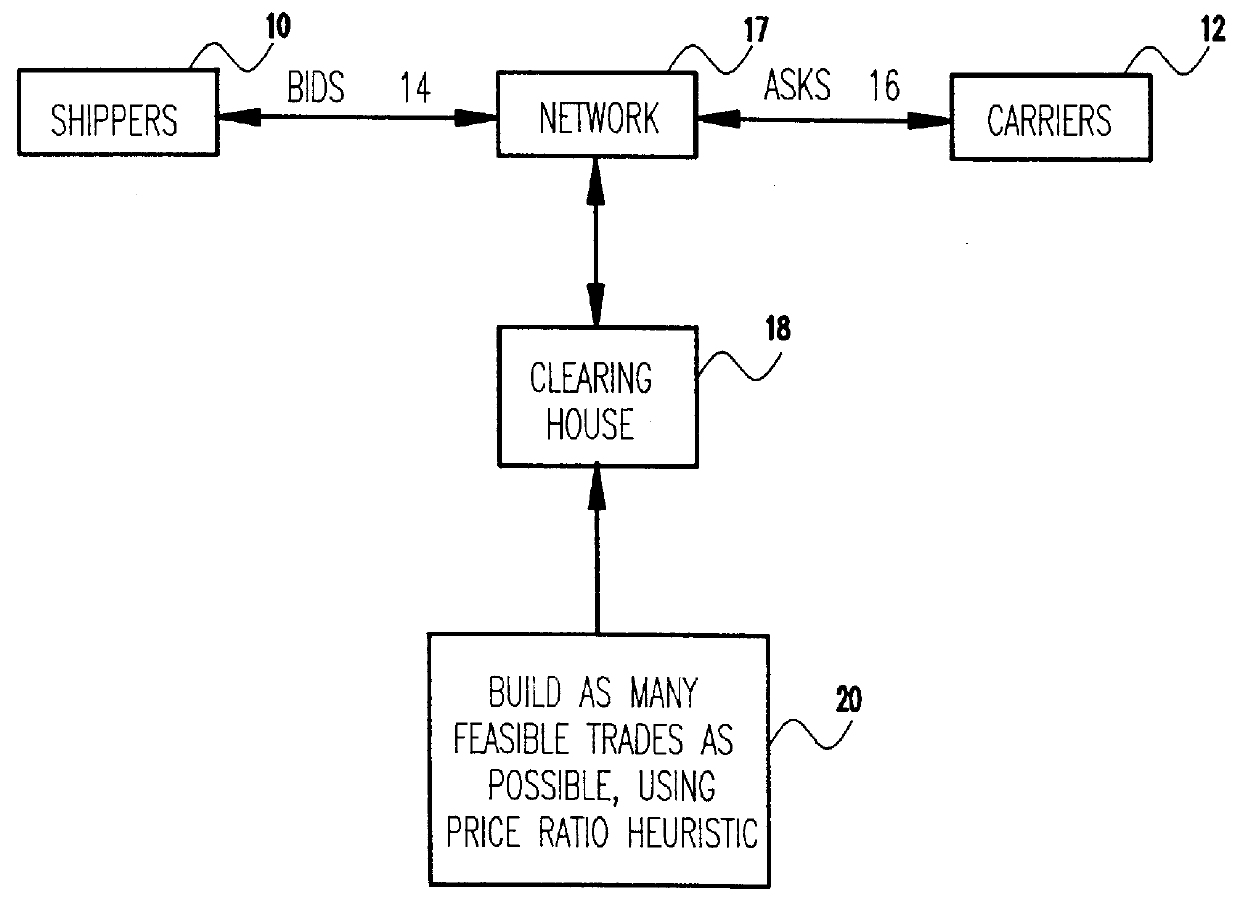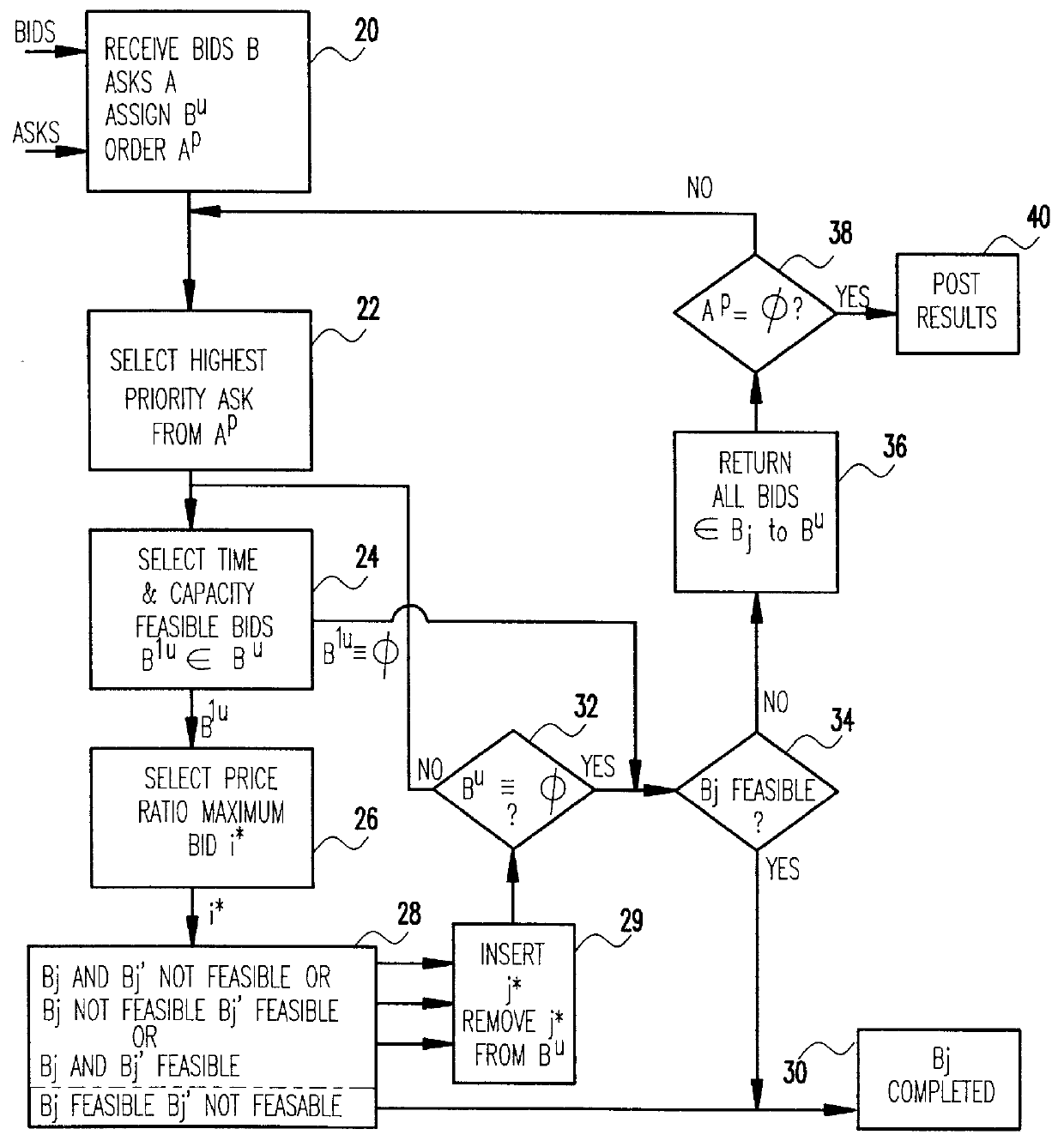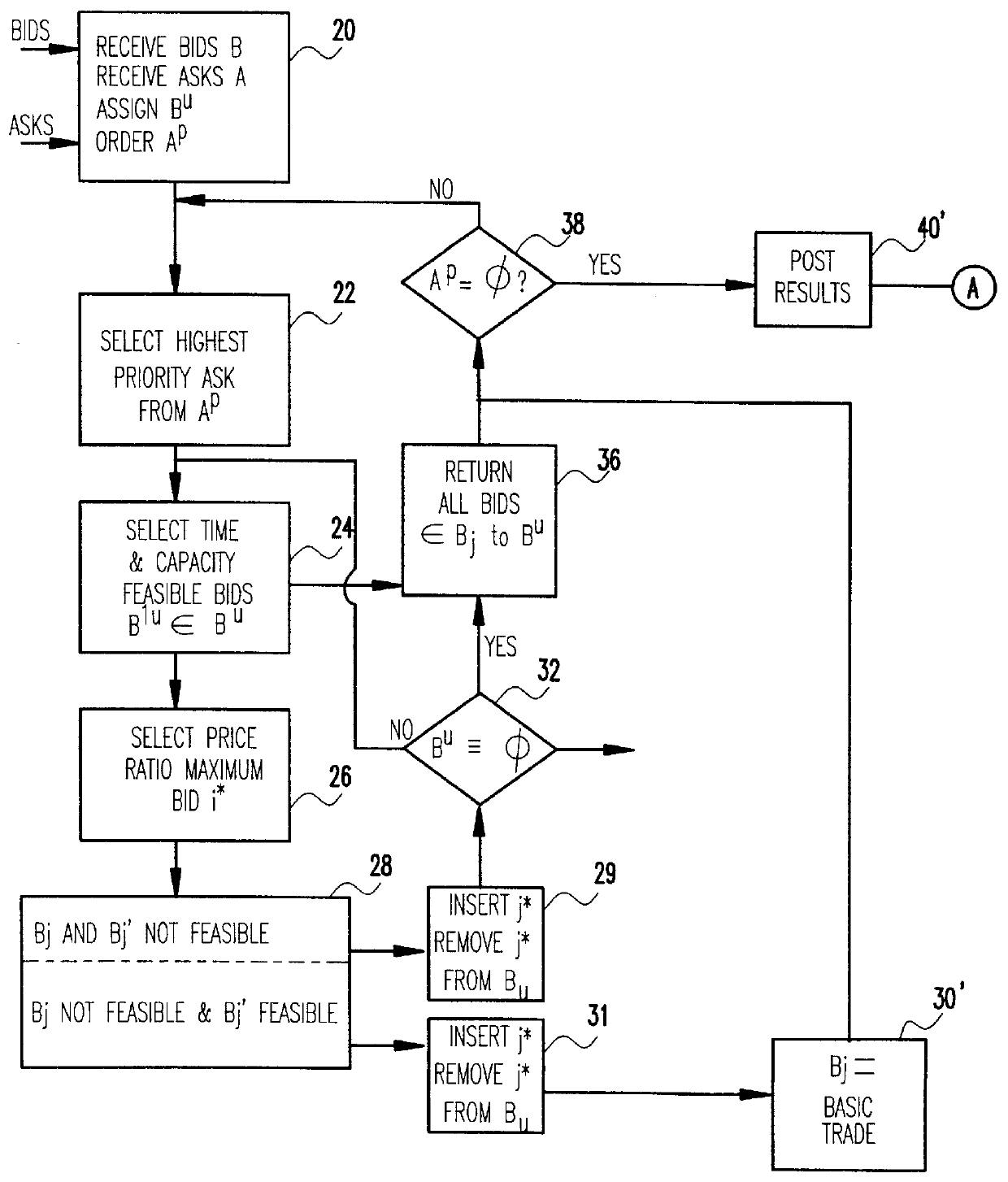Method and apparatus for electronic trading of carrier cargo capacity
a technology of carrier cargo and electronic trading, applied in the field of computer-based methods and apparatus for electronic trading of carrier cargo capacity, can solve the problems of high and repetitive search cost, commercial shippers often do not obtain the lowest price carrier, and commercial carriers do not always obtain the highest available price for their services
- Summary
- Abstract
- Description
- Claims
- Application Information
AI Technical Summary
Benefits of technology
Problems solved by technology
Method used
Image
Examples
first embodiment
Referring to FIG. 2 this invention, termed herein as the "one-pass sequential trade building method" or "1-PSTB", will be described. First, block 20 first arranges the asks j in the ascending order of their prices, which are indicated by the price field (not shown) within the bit allocation format (not shown) of the received electronic ask order. The ordered set of asks is referenced as A.sup.p. Block 20 also assigns all of the received bids to the set labeled B.sup.u, which is the set of bids that have not been matched with an ask.
Block 22 then selects the highest priority ask j from the ordered set of asks A.sup.p. For the first iteration through blocks 22 and 24, the above-defined decision variable V.sub.j ="0", since that ask has not yet been matched with a bid i. Therefore, assuming that the highest priority ask has a j index value of "1", V.sub.1 ="0" for the first iteration through blocks 22 and 24.
Blocks 24 then tests each of the bids i in the plurality of unmatched bids B.s...
example implementation
of Block 26 Selecting Bid That Maximizes Price Ratio Bid
An example of the block 26 identification of i* is as follows:
Assign the variable .DELTA..sub.i (p,q), i .epsilon. B.sup.u, to represent the change in total asking price if O.sub.i and D.sub.i are inserted after n.sub.p and n.sub.q respectively, where 1.ltoreq.p, and p.ltoreq.q.ltoreq.l. The representation of either insertion being infeasible is .infin.. Otherwise, the change in the total asking price is computed by a sub-step step carrying out equation (30) below: ##EQU10##
Next, the variable .DELTA..sub.i * is assigned to represent the minimum change in asking price, representable by equation (31) below:
.DELTA..sub.i *=min.sub.p,q.DELTA..sub.i (p,q) (31)
Next, the variable i* is assigned to represent the bid i that maximizes the price ratio, representable by equation (32) below: ##EQU11##
As can be seen, the right side of equation (32) above represents the ratio of the total bid price against the minimal possible asking price, i...
PUM
 Login to View More
Login to View More Abstract
Description
Claims
Application Information
 Login to View More
Login to View More - R&D
- Intellectual Property
- Life Sciences
- Materials
- Tech Scout
- Unparalleled Data Quality
- Higher Quality Content
- 60% Fewer Hallucinations
Browse by: Latest US Patents, China's latest patents, Technical Efficacy Thesaurus, Application Domain, Technology Topic, Popular Technical Reports.
© 2025 PatSnap. All rights reserved.Legal|Privacy policy|Modern Slavery Act Transparency Statement|Sitemap|About US| Contact US: help@patsnap.com



